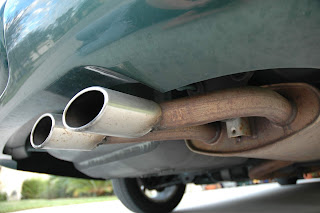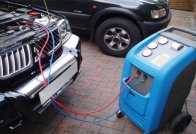Vehicle servicing remains a mystery to the majority of car owners. The majority of questions usually remain: What actually happens in the process? Why are prices so varied? Transparency becomes imperative in order to be able to gain trust. Under normal service, mechanics inspect vital components such as brakes, tyres, suspension, steering, oil levels, filters, and electrical systems. Defects discovered are clearly explained before any work is done. By doing so, customers are aware of the cause behind every suggestion and feel confident in their decisions without having to deal with unwarranted repairs.
Common Services and Their Function
Car Service Northampton is not just an oil change. It includes brake checks, wheel alignment, top-off of fluids, testing of batteries, and filter replacement. These minor yet significant steps prevent future pricey repairs. Routine maintenance maintains the vehicle in excellent condition and maintains fuel efficiency.
For instance, not doing a brake check may lead to costly damage and safety risks. A well-maintained car means more reliability, comfort, and performance in the years ahead.
How to Choose a Good Local Garage
Finding a trusted garage is more than a Google search. A recommendation from friends or colleagues is still worthwhile. Reading reviews gauges integrity, promptness, and communication. An excellent workshop provides a complete estimate before any work is done and never throws in extra surprises. Customers must see evidence of professionalism: official paperwork, polite communication, and being willing to explain. These are indicators of customer satisfaction and integrity. The right decision prevents headaches, time, and money wasted.
Transparent Pricing Counts
Bill repair is stressful numerous times, especially when the bill is ambiguous. A trained garage reveals a detailed cost split, including labour, parts, and VAT. Clients are made aware of surprise repairs in service prior to additional work being done. This fosters confidence and prevents conflicts.
Being open is more than being courteous; it is a standard of fairness. With clients well-informed about charges, they feel secure and respected. This develops long-term relationships of trust and reliability.
Safety First: Make Checks
Car servicing is mostly dependent on car safety checks. Safety checks usually include:
- Brake pad wear and brake fluid level
- Tyre tread depth, pressure, and alignment
- Suspension and steering condition
- Lighting, lights, and windscreen wipers
- Battery charge and condition
These checks keep cars roadworthy and legal. Mechanics must explain findings in simple terms, not in technical jargon. For instance, explaining that thin brake pads do make the stopping distance longer gives background to customers. Clarity brings confidence without unnecessarily evoking panic.
Reducing Disruption to Everyday Routine
Time is valuable to most car owners. A reputable garage is effective and provides precise times of completion. Most attempt to complete the routine servicing by day's end. If it is delayed on account of other repairs, communication keeps the customers informed.
Some workshops even extend to offer pick-up and drop-off service or courtesy cars to cause as little inconvenience as possible. Proper time management is indicative of professionalism and values the customer's time, and thus, the entire process is convenient and hassle-free.
The Benefits of Regular Maintenance
Regular maintenance yields long-term benefits that offset the cost. Preventive maintenance extends engine life, improves fuel efficiency, and reduces emissions. Replacing worn components like brake pads and filters before they wear out avoids breakdowns and expensive emergency repairs.
Maintenance also maintains cars in improved resale health. Other than financial benefits, it offers safety to the driver, passengers, and other road users. Continuing with routine maintenance makes car ownership an active as opposed to a passive pursuit, eliminating undesirable surprises.
Greener Is Cleaner
Green practices are becoming a reality when it comes to car maintenance. Most garages have added green-friendly operations such as recycling used tires, filters, and motor oil instead of discarding them. Others use energy-efficient equipment and biodegradable cleaning agents. Patronising workshops prioritising green-friendly operations minimises the adverse impact on the environment while still offering quality service. Choosing green-friendly garages reflects social responsibility and societal benefit. Such an approach addresses growing concern about preserving resources for the future.
Post-Service Support
Good service does not end when the job is completed. A professional report summarises the works undertaken with a note of future maintenance needs. For example, a mechanic can say that brake pads will need to be replaced in a few months. The recommendation helps customers prepare and plan without being compelled to make the repairs at the moment. This transparency leads to trust and enhances customer experience, proving that good service exceeds the workshop experience.
Conclusion
Overall, Vehicle Repairs Northampton should always demonstrate professionalism, honesty, and care. From proper pricing and suitable checks to environmental factors and honesty of intent, each process matters. Maintenance is not all about fixing problems; it is about protecting against them, ensuring road safety, and the dependability of the vehicle. When workshops are efficient and honest, customers get peace of mind and value for money. Car maintenance must be simple, regular, and reassuring, not stressful or confusing. A well-maintained car is safer, more efficient, and, in the end, nicer to drive.








